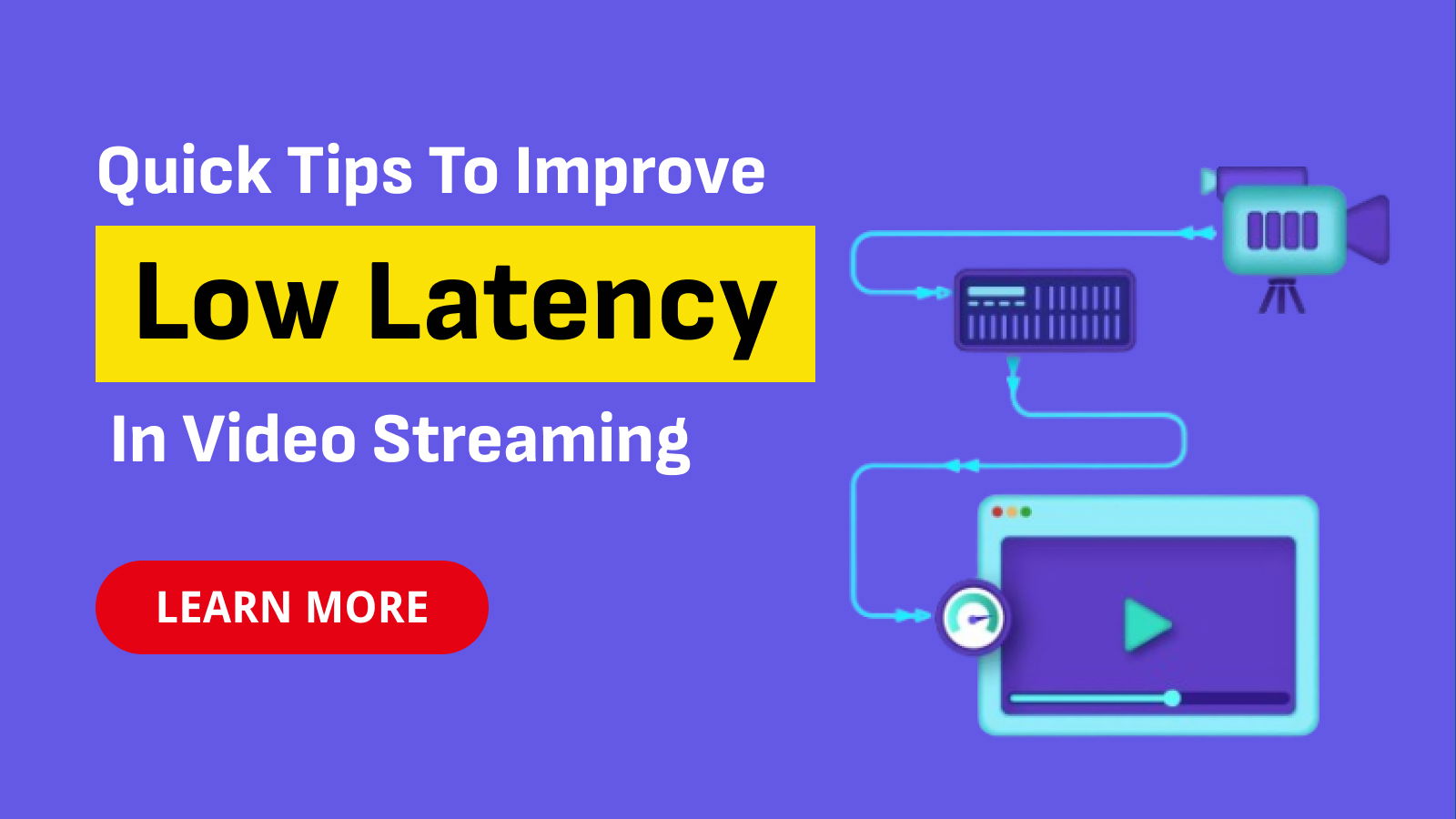Low latency has become a critical factor in delivering high-quality video streaming experiences. Whether for live sports broadcasts, online gaming, or real-time video conferencing, minimizing latency ensures smoother interactions and reduces frustrating delays. This article explores effective strategies and quick tips to improve low latency in video streaming, enhancing viewer satisfaction and engagement.
Understanding Latency in Video Streaming
Latency refers to the delay between the moment content is sent from its source to when it is received and displayed by the viewer. In video streaming, latency impacts real-time interactions, playback synchronization, and overall user experience. High latency can result in buffering, poor video quality, and synchronization issues, which can significantly degrade the viewer's experience.
Quick Tips to Reduce Latency:
1. Use Content Delivery Networks (CDNs)
CDNs optimize content delivery by caching content closer to viewers, reducing the distance data travels and consequently lowering latency. Choose a CDN with edge servers strategically located to minimize round-trip time.
2. Optimize Encoding and Compression
Efficient video encoding and compression algorithms reduce file sizes without compromising quality, decreasing the time required to transmit data packets. Use codecs like H.264 or newer standards like H.265 (HEVC) for improved efficiency.
3. Deploy Low-Latency Streaming Protocols
Implement streaming protocols designed for low latency, such as WebRTC (Real-Time Communication) or HLS (HTTP Live Streaming) with low-latency variants. These protocols prioritize real-time delivery of content packets.
4. Reduce Segment Size in Chunked Streaming
In chunked streaming, smaller segment sizes decrease the time it takes to transfer and buffer segments, minimizing playback latency. Adjust segment duration settings based on network conditions and viewer device capabilities.
5. Prioritize Network Optimization
Optimize network configurations to prioritize video traffic, ensuring sufficient bandwidth and minimizing packet loss or jitter. Use Quality of Service (QoS) tools to prioritize real-time video streams over other internet traffic.
6. Utilize Adaptive Bitrate Streaming (ABR)
ABR dynamically adjusts video quality based on available bandwidth, preventing interruptions and reducing latency by selecting the optimal bitrate for each viewer's connection speed.
7. Implement Client-Side Buffering Strategies
Buffer management techniques on client devices can help mitigate latency by preloading and managing video segments efficiently. Implementing smart buffering algorithms reduces the impact of network fluctuations on playback.
8. Monitor and Analyze Performance Metrics
Use video streaming analytics tools to monitor performance metrics such as round-trip time, buffering ratio, and playback start time. Identify bottlenecks and latency issues to optimize streaming configurations proactively.
Future Trends in Low-Latency Streaming
Looking ahead, advancements in technology such as 5G networks, edge computing, and improved video codecs will further enhance low-latency streaming capabilities. These innovations will enable faster data transmission, reduced network congestion, and seamless real-time interactions across various streaming platforms.
Conclusion
Improving low latency in video streaming is crucial for delivering immersive and responsive viewer experiences across a wide range of applications. By implementing the aforementioned strategies—from optimizing encoding and compression to deploying low-latency protocols and leveraging CDN infrastructure—content providers can effectively minimize latency, enhance viewer engagement, and stay competitive in the evolving digital landscape.
For more insights and best practices in video streaming technology, stay connected with Vodlix. Explore how advancements in low-latency streaming are shaping the future of digital content delivery and enhancing user experiences worldwide.



.png)


